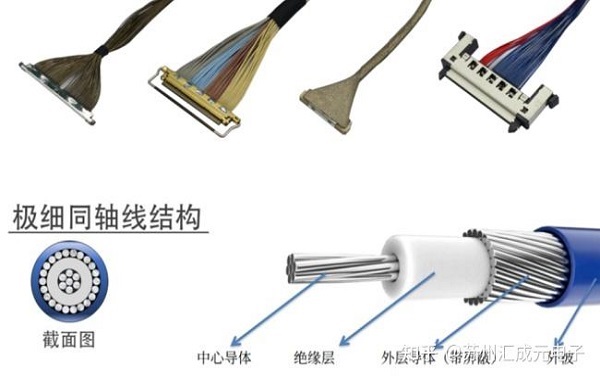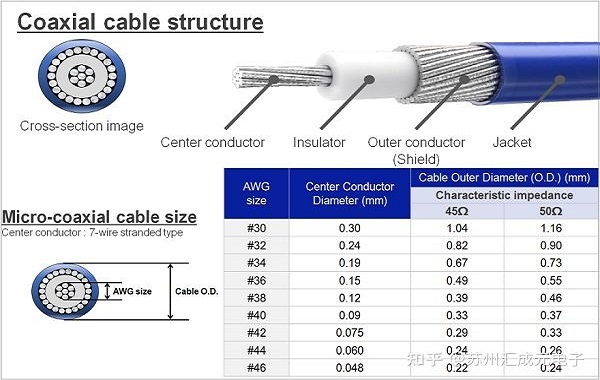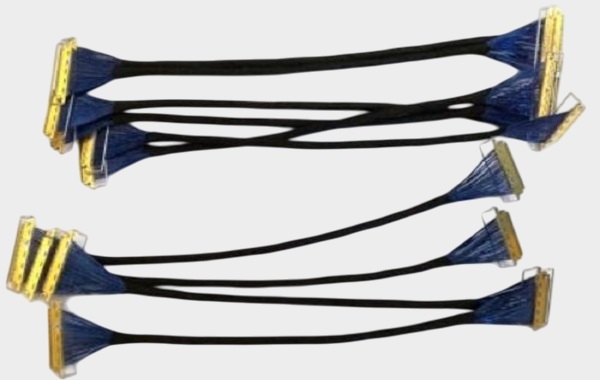In the world of high-speed signal transmission, impedance is like the width of a race track: well designed, signals flow smoothly; poorly designed, and even the finest, most aesthetically pleasing cables will frequently experience traffic jams. In devices with extremely limited space, extremely thin coaxial cables (Micro Coaxial Cable) have become the preferred choice for connecting high-speed interfaces such as motherboards, display modules, and cameras. This article will analyze the common impedance values of this signal highway with an outer diameter of less than one millimeter, as well as the differences and selection strategies for different impedances in application.

What is an extremely fine coaxial cable bundle?
Micro coaxial cable is a coaxial cable with an outer diameter usually less than 1 millimeter. Its internal structure still includes the inner conductor, insulation layer, shielding layer, and outer sheath, but it is compressed to the limit through fine manufacturing processes. This cable assembly is flexible in wiring in narrow spaces and has good anti-interference ability and signal integrity. It is widely used in high-precision equipment such as laptop hinges, foldable smartphones, medical endoscopes, industrial detection probes, and robot joints.

Why should we pay attention to the impedance value?
In high-speed signal transmission, impedance matching is like the lane width of a highway. If the impedance design does not match, signal reflections and attenuation will occur, which is analogous to "traffic congestion." The stability of characteristic impedance directly affects signal integrity, transmission speed, and the electromagnetic compatibility performance of the system. Manufacturers of extremely thin coaxial cables achieve precise control of the target impedance value by adjusting the diameter of the inner conductor, the dielectric constant of the insulating material, and the shielding structure.

Section 3: Common Impedance Values and Applications
• 45 ohms: Lower impedance, suitable for applications requiring higher current carrying capacity or special interface design, commonly used in some high-speed interfaces or video links.
• 50 ohms: The most common impedance type, suitable for most high-speed data and RF signal transmission, such as USB 3.0 camera modules, notebook display connection lines, and medical equipment.
• 60-85 ohms: High impedance, low capacitance, suitable for long-distance or ultra-high-speed signal transmission, such as LVDS, MIPI D-PHY, SerDes, and other interfaces, with high manufacturing accuracy requirements and high cost.
• 75 ohms: Not as common in extremely thin coaxial cables as the previous types, but it is still used in specific video transmission applications (such as industrial cameras, medical imaging) where transmission loss is lower and suitable for high-frequency video signals.

How to choose the appropriate impedance?
• Short-distance, cost-sensitive projects: Either 45 ohms or 50 ohms are acceptable, but 50 ohms is more universal.
• For long-distance, high-speed, or high-precision applications: it is recommended to choose 60-85 ohms to ensure signal integrity.
• Specific video system: If the standard requires, 75 ohms is still a stable and reliable choice.

The common impedance values for ultra-fine coaxial cables include 45 ohms, 50 ohms, 60-85 ohms, and 75 ohms. Different impedances are suitable for different scenarios, with no absolute superiority or inferiority. By combining interface standards, signal rates, wiring distances, and budget, selecting the appropriate impedance ensures stable and efficient high-speed signal transmission and provides reliable guarantees for the performance of micro-devices.
I am
[Suzhou Huichengyuan Electronic Technology], Focus on the design and customization of high-speed cable harnesses and ultra-thin coaxial cables for a long time, committed to providing stable and reliable high-speed interconnect solutions. For more information or customized services, please contact:
Manager Zhang 18913228573 (WeChat same number)。




